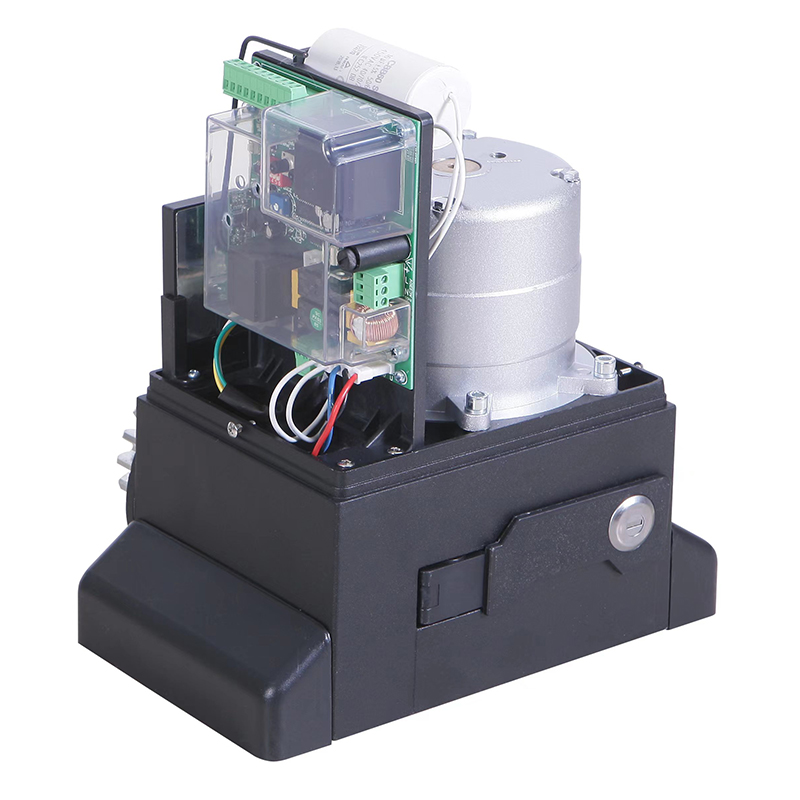Gate access control systems play a pivotal role in managing entry and exit points, enhancing security, and regulating traffic flow in various environments, from residential communities to commercial facilities. Understanding the main components of these systems is crucial for effective implementation and operation. This article delves into the key components that constitute a typical gate access control system and their respective functions.

1. Gate Barrier or Gate Operator
At the heart of any gate access control system lies the gate barrier or gate operator. This physical mechanism controls the opening and closing of the gate in response to input from the access control system. Gate barriers come in various forms, including sliding gates, swing gates, vertical lift gates, and barrier arm gates, each suited to different applications and space constraints.
2. Access Control Panel
The access control panel serves as the central hub of the gate access control system, managing all access-related functions. It processes user credentials, grants or denies access permissions, logs entry and exit events, and communicates with other system components. The access control panel typically interfaces with keypads, card readers, biometric scanners, and remote transmitters to authenticate users and authorize gate operations.
3. User Credentials and Authentication Devices
User credentials are the means by which individuals are granted access through the gate. These credentials can take various forms, including:
Keycards and Proximity Cards: Users present these cards to a card reader for authentication.
Key Fobs and Remote Transmitters: These handheld devices transmit a signal to the access control panel to trigger gate opening.
Biometric Data: Biometric authentication methods, such as fingerprint, iris, or facial recognition, verify users' identities based on unique physiological characteristics.
PIN Codes: Users enter a unique personal identification number (PIN) via a keypad to gain access.
4. Card Readers, Keypads, and Biometric Scanners
Card readers, keypads, and biometric scanners serve as the interface between users and the access control system. Card readers read data stored on keycards or proximity cards, while keypads allow users to input PIN codes. Biometric scanners capture and verify biometric data for authentication purposes. These devices are typically installed at entry points alongside the gate and are connected to the access control panel.
5. Gate Sensors and Safety Devices
Gate sensors and safety devices are critical components for ensuring safe operation and preventing accidents. These may include:
Vehicle Detection Sensors: Inductive loop sensors, photoelectric sensors, or radar sensors detect the presence of vehicles approaching the gate, triggering the gate to open.
Obstacle Detection Sensors: These sensors detect obstructions in the gate's path and halt operation to prevent damage or injury.
Safety Photocells: Infrared photocells create an invisible beam across the gate's path. If this beam is interrupted by an object or person, the gate stops closing or reverses direction to avoid collisions.
6. Communication Interfaces
Gate access control systems often integrate with other security and building management systems. Communication interfaces facilitate seamless integration with:
Network Connectivity: Ethernet or Wi-Fi connectivity enables communication between the access control panel and a central monitoring station or remote management system.
Intercom Systems: Integration with intercom systems allows for two-way communication between users and security personnel for verification purposes.
Video Surveillance Systems: Integration with CCTV cameras enables real-time monitoring of gate activities and provides visual verification of users.
Conclusion
A gate access control system comprises several interconnected components working together to regulate access, enhance security, and streamline traffic flow. From gate barriers and access control panels to user credentials, authentication devices, gate sensors, and communication interfaces, each component plays a vital role in the system's overall functionality. Understanding these components is essential for designing, implementing, and maintaining an effective gate access control system tailored to the specific needs of residential, commercial, and industrial environments.